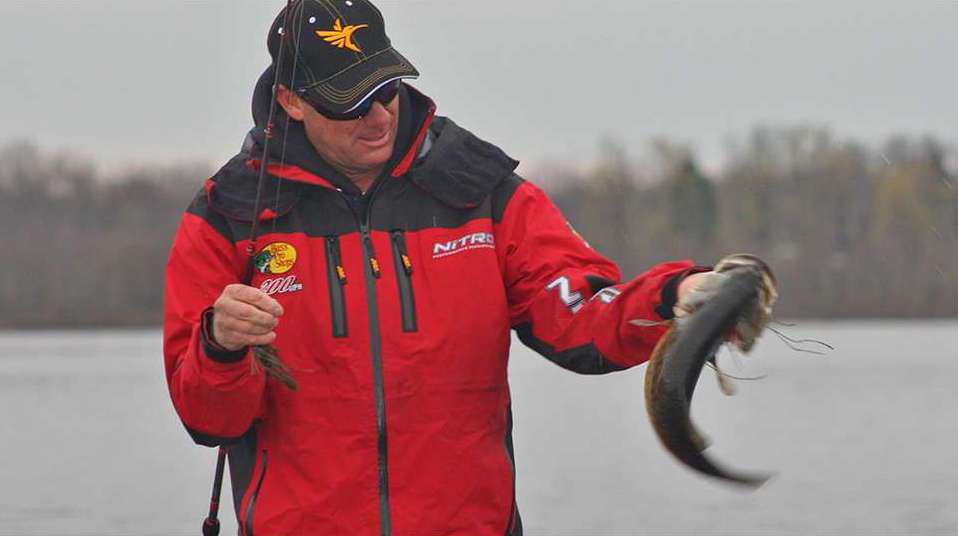
It’s wintertime here in Michigan, and I’ve been very busy preparing for next season. I’m gathering up my new equipment, jerseys and tackle.
And with winter’s cold weather comes ice fishing season for us here in the North. I have a private pond behind my house where I do a lot of lure testing. It’s a great laboratory because the water is clear, and I can watch how bass react to baits and new techniques.
The pond is starting to freeze, which means I’ll get the opportunity to get on the ice and do some hard-water fishing in the coming days.
Believe it or not, ice fishing has taught me a lot about bass and how they react in cold weather. It also has changed my way of thinking about bass aggressiveness in cold water.
While traditional thinking is that you have to use tiny baits and move them ever-so-slowly to get fish to react.
Up until a few years ago, that concept was the foundation for how I fished in late fall and early spring when the water was cold. I now know that isn’t always the case.
My experiments through the ice have revealed that I can jig a variety of baits rather rapidly and get the kind of bass strikes that knock the slack out of the line. There’s nothing timid about the fish when that happens.
Since then, I’ve come to believe that water temperature is highly overrated in predicting cold-water activity levels of both largemouth and smallmouth bass.
I’ve expanded my cold, open-water approach to include far more lures and techniques than what I once used.
That’s not to say that it isn’t important to be aware of trends and changes in water temperature, but you also have to keep an open mind.
Nor am I saying that bass are always aggressive in cold water. I have learned that an abrupt drop in water temp, will affect bass behavior.
A good example is a trip I did one year to Missouri’s Table Rock Lake in late winter. The water temp was around 45 degrees, and I was catching bass in that 10- to 15-foot zone on crankbaits.
However, the area got 10 inches of heavy, wet snow the next day, but then the air temp warmed rapidly the following day. The snow melted quickly and the thaw pushed cold water runoff into the pockets and creeks. The lake temp fell 5 degrees rapidly, and it killed the crankbait bite.
Those kind of abrupt changes can occur faster on smaller, shallower bodies of water and halt an aggressive bite, but air temperatures don’t affect water temperature or the bass’ aggressiveness on large lakes as much as one would believe.
Another misconception is that whenever the water gets cold, the only presentations that are effective are finesse baits fished vertically and slowly.
That’s definitely not true. Remember when the Alabama rig was introduced and anglers were catching big sacks by fishing horizontally through the water column? Since then, we’ve learned the colder the water the more effective it is.
We can’t use A-rigs in Elite competition, but seeing the A-rig successes prompted me to try individual lures that can be fished horizontally and would provide me similar efficiency at catching bass under cold water conditions.
I’ve learned a lot about that, and I will share those thoughts with you in next week’s column.
In the meantime, remember that it’s all about the attitude!
Editor’s note: Read part 2.
Kevin VanDam’s column appears weekly on Bassmaster.com. You can also find him on Facebook, Twitter and Instagram.

